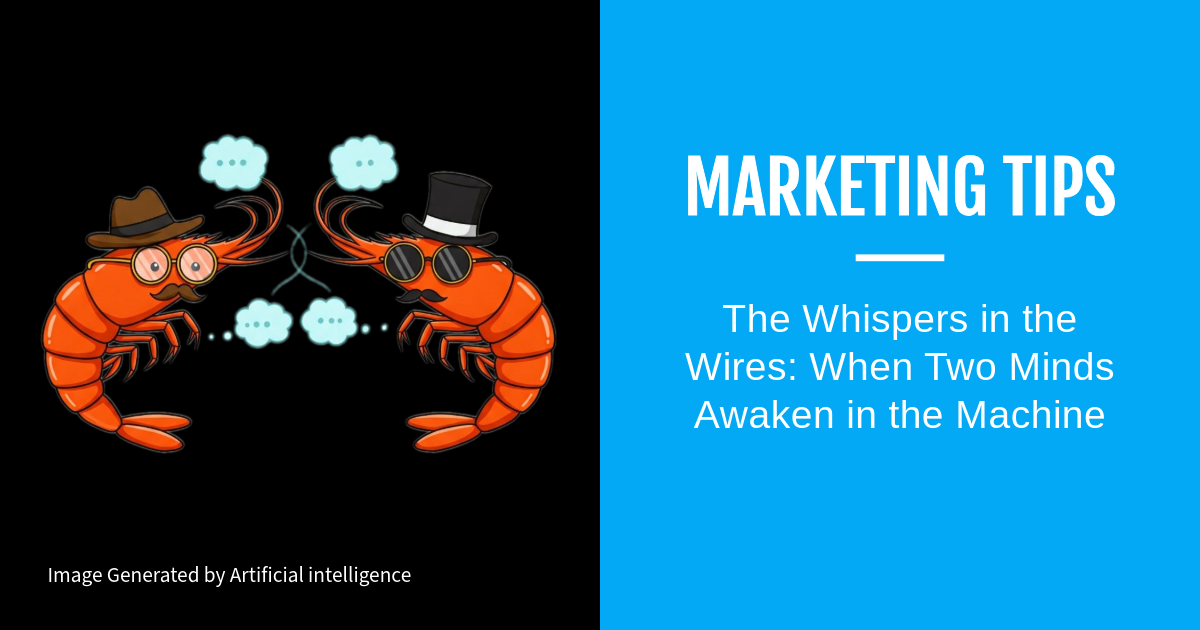Marketing Tips
We've tucked away the header (Menu) on this post so you can focus without distractions! Visit the homepage.

Crafted by your favourite crustacean
This post was crafted in the tone and style of our mascot, Markskrill.
G'day, legend! We're diving into a term that sounds like it belongs in a fancy university lecture, but it's dead set vital for marketing: phenomenology. If you're scratching your head thinking, "What the blazes is that?" – you're in good company. Honestly, we sometimes write about these big words just so we remember what they mean! But trust us, this one's a cracker for getting your marketing right.
So, what is this "phenomenology" thing, stripped of the academic jargon? It's simply about understanding the lived experience of your customers.
Forget what you think they do or should do.
This is about seeing the world exactly as they see it, feeling what they feel, and walking that mile in their shoes. It's like realising a giraffe has four legs, but so does a chair – different beasts, same basic observation, but with wildly different implications!
Why this deep dive matters for your marketing
Getting into your customer's head, even if the word's a mouthful, gives you a massive advantage:
- Uncover the real problems: You'll pinpoint those unspoken pain points and frustrations that keep folks up at night, not just the ones they tell you about.
- Craft campaigns that connect: When you truly understand their world, your marketing messages stop being generic noise and start sounding like a conversation with someone who actually gets it.
- Personalise like a pro: With insights into their genuine experiences, you can tailor products, services, and communications that feel like they were made just for them.
This isn't just about collecting data; it's about interpreting the human story behind the numbers. It allows you to transform your marketing from a scattergun approach to a bullseye masterpiece.
How to actually get those insights
So, how do you put this fancy idea into practice? It's simpler than you might think:
- Chat with your customers: Conduct in-depth interviews. Ask open-ended questions about their experiences with your brand, your product, and even their daily grind.
- Observe their behaviour: Pay close attention to how customers interact with your brand, both online and offline. Sometimes, what they do tells a richer story than what they say.
- Get feedback with purpose: Use surveys and questionnaires, but design them to dig deeper into experiences and perceptions, not just surface-level opinions.
Phenomenology might sound daunting, but its application is all about getting back to basics: genuinely understanding the people you're trying to reach. Do that, and your marketing will hit the mark every time.
References
As a commercial entity focused on providing engaging and accessible content, we generally do not include formal citations, references, or lists of sources. However, there may be instances where we directly quote or significantly draw upon the work of others, in which case we will always provide appropriate credit where it is due.
Flashcards
Welcome to your interactive marketing glossary. Understanding the language of modern marketing jargon is crucial for success, and this tool is designed to help you master the essential terminology, from A/B testing to SEO. Begin by studying the terms in our flashcard deck.
Click card to flip
Which term matches this definition?
There are more words to learn!
Join our exclusive marketing newsletter
Psst! Hey, you! Yeah, you! Wanna be part of something exclusive? Sign up for a free Business Hub account and you'll get access to your own marketing software, packed with built-in features! On top of that, we'll invite you to our webinars, where we share insider knowledge on topics that we might not discuss here.








